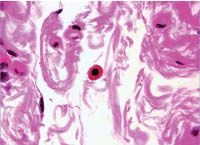Article
Effective ocular allergy treatments are dual action
Treatment for allergic conjunctivitis has come a long way from the days of oral antihistamines or cromolyn versus steroids. Our choices have broadened and our targets are much more specifically defined.
Treatment for allergic conjunctivitis has come a long way from the days of oral antihistamines or cromolyn versus steroids. Our choices have broadened and our targets are much more specifically defined.

The anti-allergy dual-action agents have achieved this with their ability to stabilize mast cells and inhibit histamine from binding to its receptors, providing immediate, long-lasting relief from the signs and symptoms of allergic conjunctivitis. The importance of providing effective relief for patients should be taken seriously and coupled with the clinician's need to ameliorate the underlying disease.
Diagnosing allergic conjunctivitis may prove to be difficult in the off-season when patients are asymptomatic. Asking the right questions will help identify these patients and target the source of their irritation. Taking a comprehensive medical history is imperative. Ocular allergies can have a significant impact on quality of life, yet 90% of patients consistently turn to less-than-optimal over-the-counter (OTC) products, such as antihistamine/vasoconstrictors, to treat their signs and symptoms. These OTC products are indicated for four-times-daily dosing, but the dose duration is only up to 2 hours, which does not provide full-day coverage.
Patients must be informed that there are more efficacious, longer-lasting, and better-tolerated prescription products available.
The ocular allergic reaction

After mast cell degranulation, histamine binds to receptors located in the cornea and conjunctiva. Binding at histamine receptors on the vascular endothelium induces dilation (redness) and endothelial gaping (swelling). The binding of histamine to receptors on nerve cells induces itching, as well as some redness and swelling.2 Histamine remains the primary mediator involved in the ocular allergic reaction. In fact, instillation of histamine into the eye reproduces, in a dose-dependent fashion, the exact clinical picture of acute allergic conjunctivitis.3
Newsletter
Don’t miss out—get Ophthalmology Times updates on the latest clinical advancements and expert interviews, straight to your inbox.




